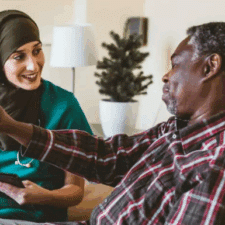 An estimated 50 million Americans have no health insurance. Unfortunately, without medical insurance, the odds of staying healthy are stacked against you. The uninsured tend to have less access to care, are less likely to receive preventive care and are more likely to be hospitalized for health problems that could have been avoided.
An estimated 50 million Americans have no health insurance. Unfortunately, without medical insurance, the odds of staying healthy are stacked against you. The uninsured tend to have less access to care, are less likely to receive preventive care and are more likely to be hospitalized for health problems that could have been avoided.
For the best health protection possible, your ultimate goal should be to obtain to obtain health coverage. But in the meantime, there are some available health resources that may be worth investigating.
1. Common Illnesses or Injuries
People with a severe cold, the flu or a sore throat, or those with broken bones or cuts that require stitches have several options:
- County public health clinics, community health centers or free clinics (see resource box for locations and contact information) provide care for free or on a sliding scale based on income.
- Private walk-in or urgent care clinics. They generally require payment at the time of service, but many list their prices at the front desk so at least you know what you’re getting into.
2. Chronic Conditions
Public health clinics, community health centers and free clinics also can help people manage diabetes, high blood pressure, heart disease and other chronic conditions so they don’t turn into health crises. People with chronic conditions also can be treated at walk-in clinics and by private physicians, though it might be difficult to find a private physician who will take an uninsured patient.
3. Prescription Medications
Patients at public or community health centers or free clinics are sometimes signed up for drug assistance programs for medications they need. But if you make too much money to meet their income requirements (and not enough to afford insurance), careful shopping can help.
Many major pharmacies including Walmart and Target provide free or low-cost generic medications, including antibiotics. Places such as Walgreens offer prescription discount cards for a yearly membership fee.
4. For Children
Free or low-cost immunizations and school physicals are available at public health departments. Walk-in clinics charge a reasonable fee for the service. Area hospitals team up with school districts and public health agencies to host back-to-school health fairs, which offer screenings and immunizations.
5. Ob-Gyn Services
Public health clinics and community health centers provide routine exams, prenatal care, contraceptive counseling and diagnosis and treatment of sexually transmitted diseases, for free or on a sliding scale.
6. Try To Stay Healthier
There are inexpensive ways to stay out of the doctor’s office:
• Monitor your blood pressure at machines in drugstores.
• Stop smoking.
• Get a flu shot.
• Limit your salt intake.
• Walk for exercise.
• Drink water rather than soft drinks.
• Wash your hands frequently.
• Brush and floss your teeth twice a day.
• Use free screenings to get blood pressure, blood sugar and cholesterol checked.
One way to get a free mini-checkup is to donate blood. The screening process for donors includes a check of your blood pressure, pulse, iron count, temperature and cholesterol. However, officials stress that people shouldn’t use blood donation as a way to get screened for a sexually transmitted disease.
7. When Do You Need The ER?
People who are experiencing chest pains, stroke symptoms or serious abdominal pains should go directly to a hospital emergency room.
Many emergency rooms also have people on hand to help uninsured patients and families figure out if they qualify for certain low-income health programs such as Medicaid.
Obamacare Facts For 2013
Ultimately, for the greatest possible medical care options, you and your family should consider enrolling in an insurance plan that best meets your needs. Otherwise known as the Patient Protection and Affordable Care Act, Obamacare’s goal of this law is to provide affordable health insurance for all US citizens and to reduce the growth in health care spending. So far, the rate of uninsured decreased from 16.3% to 15.7%, the biggest percentage drop since 1999 due to the Affordable Care Act.
Here are some helpful facts about the aspects of Obamacare that may help you:
In 2013…
• Health insurance exchanges will open for low to middle income Americans, making it easier for them to shop for health insurance. Those making over 400% of the poverty level can shop on the exchange but will not receive tax credits or discounts. The insurance purchased on the exchange doesn’t go into effect until Jan 1st, 2014.
• Tax credits, discounts on out-of-pocket costs, tax breaks and other subsides are available on the exchange. The help you get on the exchange is directly related to your gross adjusted income.
• There is a .9% Obamacare Medicare tax on those making over $200k as an individual or $250k as a business or family. This accounts for somewhere between 1.5% and 4.2% of tax payers (these numbers are from recent IRS and census reports, 2% is often used as a rough and not inaccurate estimate. Most sources agree the number is under 3%. 3% is also the number of businesses making over this amount in taxable income).
• 3.8% Medicare tax on unearned income over $200 for individuals and $250 for families and businesses.
• $500,00 deduction cap on compensation paid to insurance company workers
• Obamacare lays out new rules about the amount that can be contributed to an FSA. A cap of $2,500 is applied to reform FSA’s and prevent individuals from overpaying and then needing to rush to use the money before it disappears.








